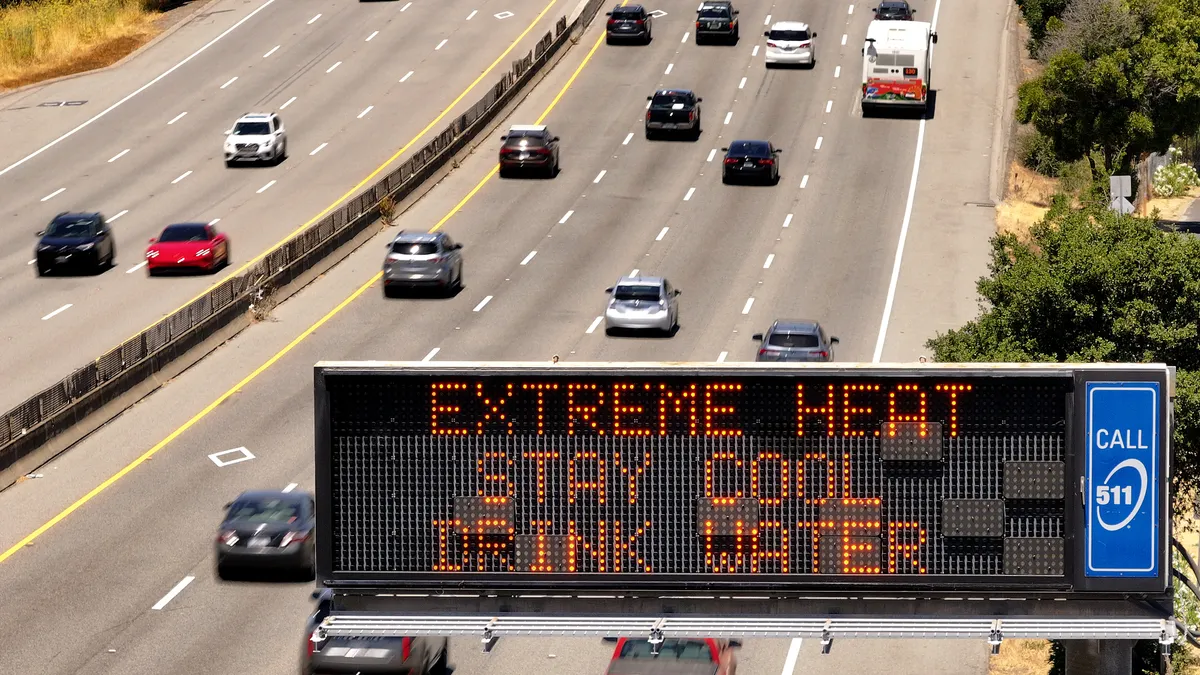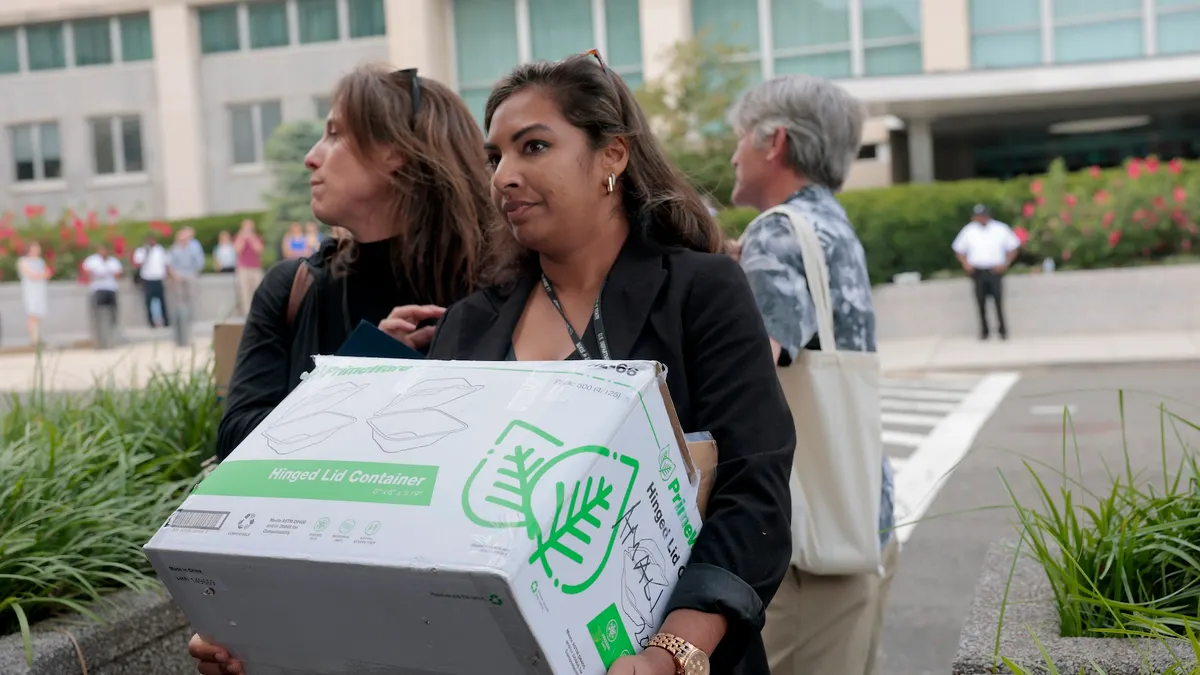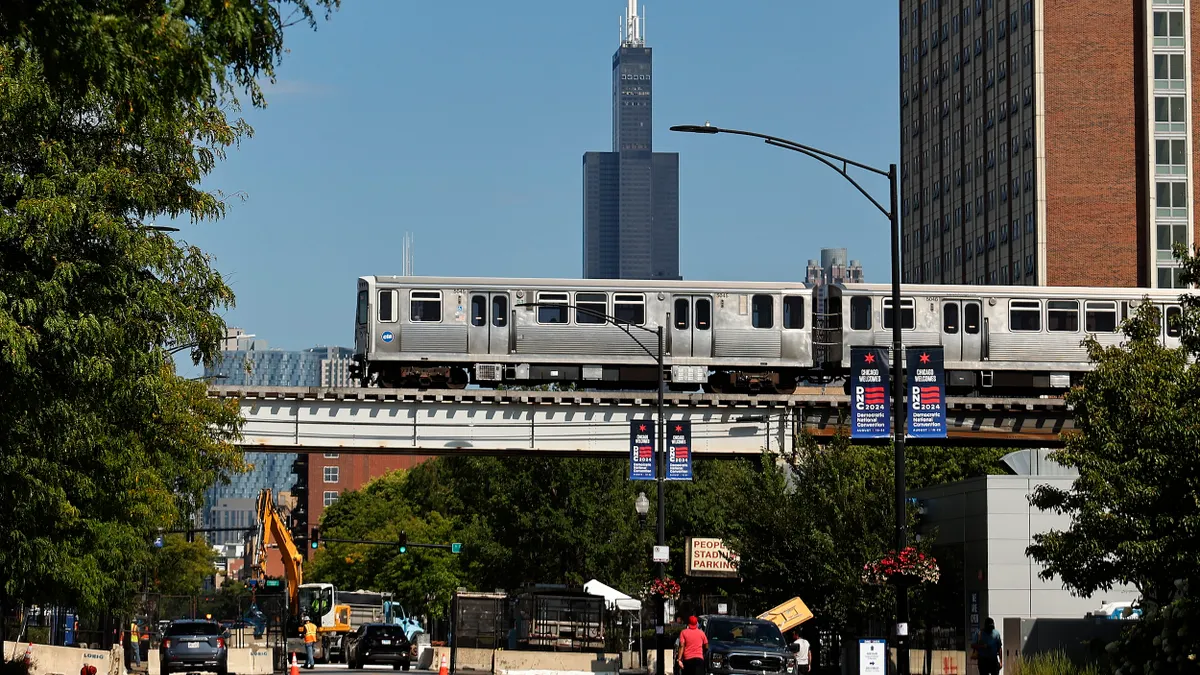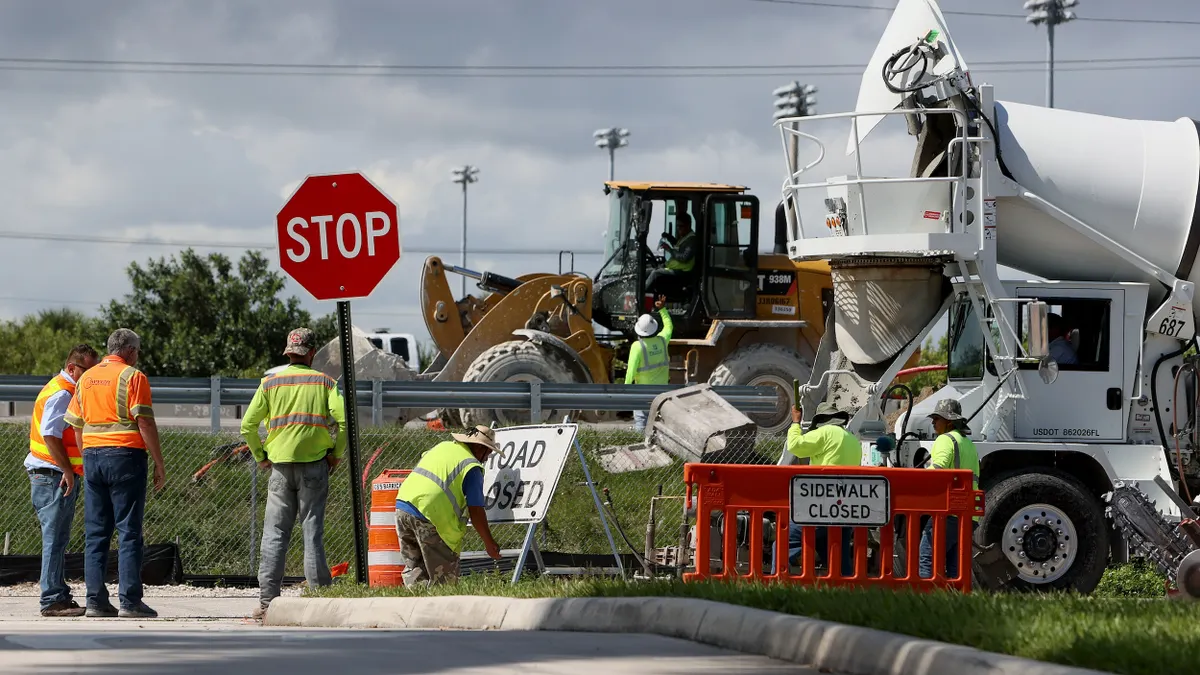Waste industry groups are working through numerous questions related to how the Occupational and Safety and Health Administration’s long-awaited proposed heat standard could affect daily operations.
The U.S. Department of Labor’s proposed rule, released last week, is meant to protect indoor and outdoor workers across the country from extreme heat. It calls for employers to develop a detailed Heat Injury and Illness Prevention Plan to mitigate heat-related hazards in the workplace.
The standard would require employers to monitor for heat risks on job sites and provide drinking water, rest breaks and shade or other temperature controls once the temperature reaches a certain threshold. It also would require plans for safely acclimatizing workers to high heat environments.
Industry groups said they are still poring over details of the proposed standard before submitting public comments. Their early impressions include questions about how to apply the standard to the waste industry’s varied workplace conditions, from enclosed recovery facilities to landfills and collection routes that don’t have shade during hot days.
“The waste industry is unique in a lot of different ways, so we have to look at these rules from our industry perspective,” said Kirk Sander, vice president of safety and standards at the National Waste & Recycling Association. He previously served on an OSHA advisory committee’s heat injury and illness prevention work group.
Operational factors
Though most companies in the industry recognize high temperatures can pose health hazards to employees and use various methods to avoid heat illness, each facility might approach heat mitigation strategies differently without a standardized set of federal rules, he said.
Because of the variation in waste industry jobs and site conditions, some facility operators are also “concerned about a one-size-fits all regulation that may not work well in their workplace,” added David Biderman of Biderman Consulting.
Several states already have heat illness prevention standards, including California, Minnesota, Oregon and Washington. Yet the federal OSHA standard would be the first to apply to relevant industries nationwide, a process that has been in the works for years.
One lingering question is how an operator’s Heat Injury and Illness Plan will account for monitoring varied worksites to determine if high heat becomes too hazardous, said Biderman. The federal proposal calls for using a measure such as heat index or wet bulb globe temperature, but does not list a specific temperature threshold like some states’ heat standards do. The standard does call for posting signs when indoor ambient temperatures exceed 120 degrees F.
The proposed standard does not apply to workspaces or vehicles where “air conditioning consistently keeps the ambient temperature below 80°F.” Sander said it’s unclear how it could apply to workers who leave the cab of their vehicle repeatedly, such as drivers who use an air conditioned truck but get out to pick up bins along a hot curb.
The OSHA standard also includes acclimatization requirements for workers not accustomed to the heat because they are new to the job or have been away from the job for more than 14 days. It calls for gradually increasing new employees’ exposure to heat over time, starting with no more than 20% of a normal work shift exposure on the first day and ramping up to 80% by the fourth day of work.
Sander said the acclimatization aspect is “one of our biggest concerns” because of the questions about how to build that process into daily operations such as scheduling and keeping records of employee heat exposure. There are also questions about how that standard might apply to temporary workers who are already acclimatized to hot working conditions from a previous job, such as roofing, but start a new job with a waste company soon after.
These new rules may result in facilities needing to change their operations to accommodate new standards, said Kirstyn Oldendorf, director of public policy for the Solid Waste Association of North America.
Many companies already make adjustments based on the weather — numerous public and private sector haulers will start collections earlier in the morning before it gets too hot, for example — but the new OSHA rule could expand the type of scheduling and planning considerations companies will need to undertake, she said. Scheduling shifts to account for a proposed mandatory 15-minute rest break every two hours is one example.
Employers may need to create or update their heat safety training programs and heat illness prevention protocols, Biderman added. That could be a bigger lift for some smaller operators that have fewer resources. “From a planning perspective, it's going to involve a fair amount of work on the front end,” he said.
As part of the training, employers would be required to educate workers on how to recognize heat-related illnesses and seek help if needed. They would also educate workers on the importance of drinking plenty of water and their right to take rest breaks if needed.
Oldendorf said that policy could also help protect workers who currently operate under a “task system” where they end their shift when they’re done with their route instead of clocking in and out for a time-based shift. Under a task system, some workers might push through heat illness symptoms so they can go home sooner, not realizing how serious those symptoms can be, she said.
The rule also provides guidance for personal protective equipment, a detail Sander said could spark product innovations such as new kinds of PPE, electrolyte products or other heat-related items.
State guidance
Though state heat prevention rules differ slightly from the proposed federal OSHA standard, they may offer insight on how daily operations can work under new heat standard rules.
Oregon adopted its heat illness prevention rules in 2022 and calls for heat protections that are somewhat similar to the proposed federal OSHA rule, including calling for worker access to shade, enough drinking water and annual supervisor and employee training.
Metro, the government entity that oversees the Portland region’s waste and recycling system, maintains a heat policy based on state OSHA rules. The Portland area has experienced high heat days recently. Cary Stacey, deputy director of Metro Waste Prevention and Environmental Services, said via email that this prompted Metro to provide waste workers with longer and more frequent rest breaks, as well as more drinking water and access to cooling areas.
Metro even closed its two transfer stations and its household hazardous waste facilities early one day this week due to high heat. Metro modifies its operating hours when the heat index is 95 degrees F or higher for more than three consecutive hours, Stacey said.
Meanwhile, Florida recently banned cities and counties from enacting their own heat protections for outdoor workers. Texas has a law that prevents municipalities from enacting heat protection laws that are stricter than the state’s.
The federal OSHA standard still must go through a public comment period, set to open in the near future, and other steps before it’s finalized. Oldendorf said many waste operators will continue to find ways to improve their response to high-heat days, especially as they become more frequent due to climate change.
That could look like investing in heat protection PPE, handing out electrolyte popsicles and frozen water bottles to employees at the beginning of shifts, or radioing certain employees to remotely check on their well-being, she said.
“It’s thinking about how you are equipping your employees to deal with the heat, having an awareness of the dangers and training employees to know what to look for and how to watch out for each other,” she said.




















